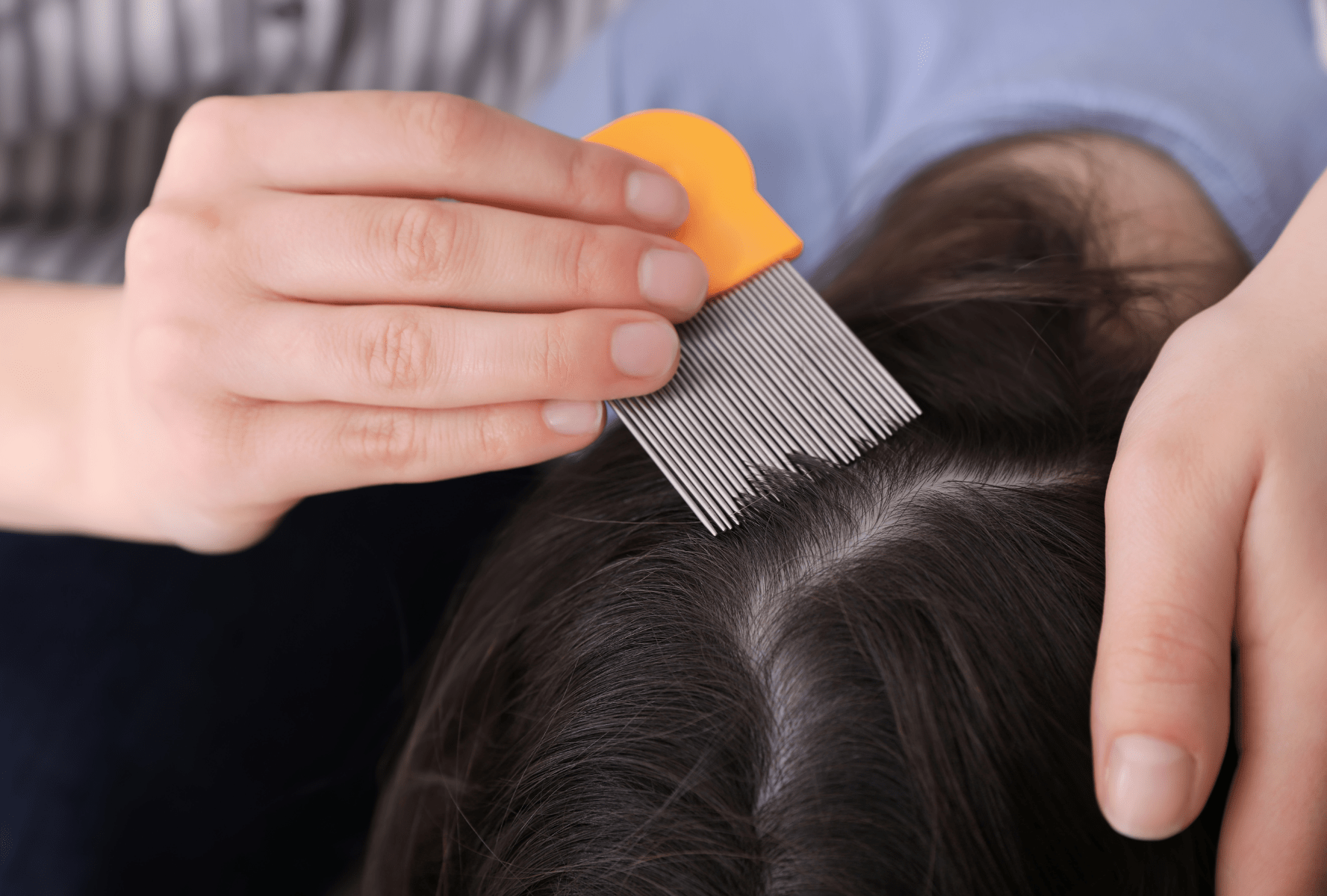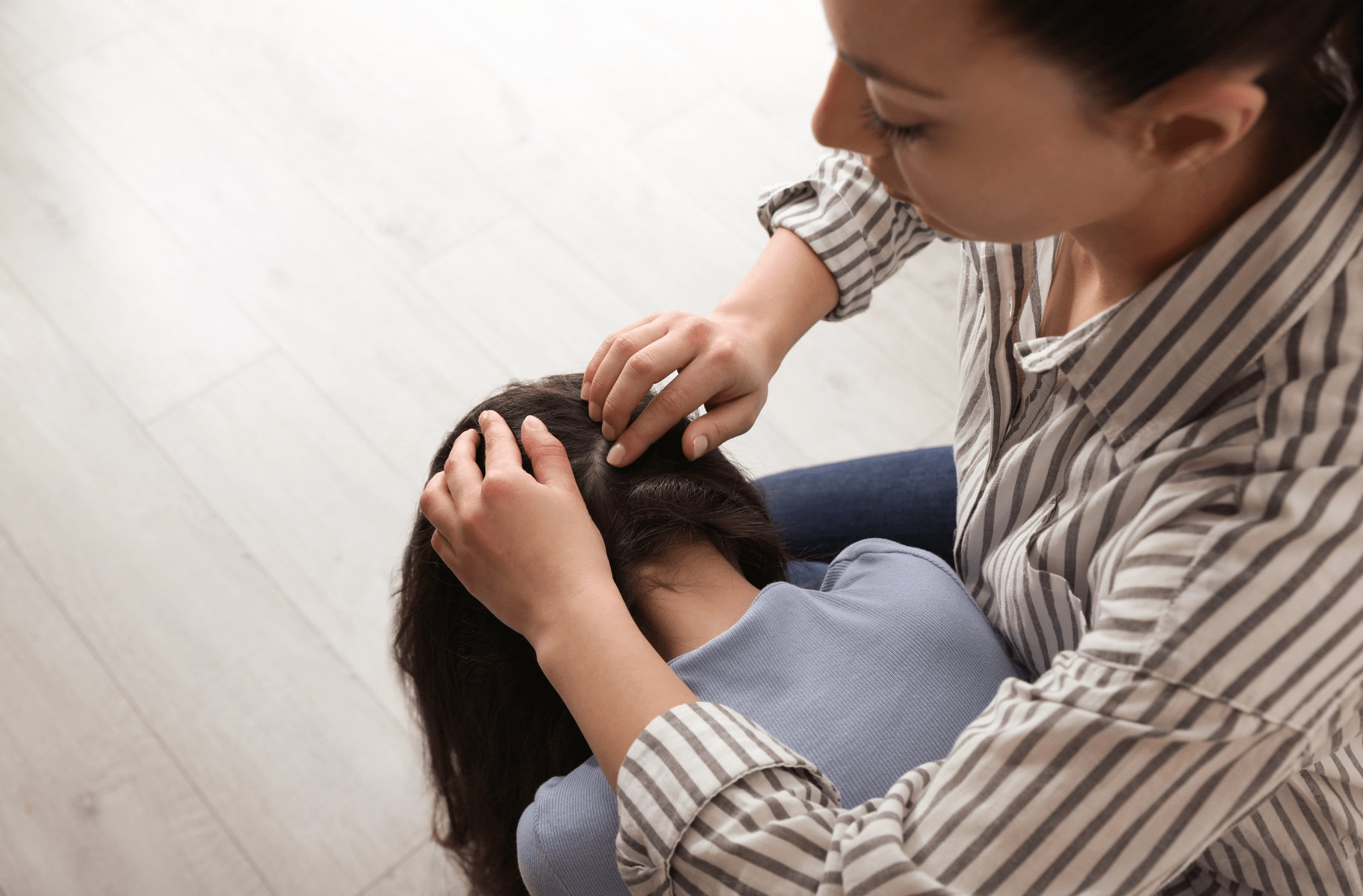
How to Remove Hair Lice Naturally: Your Guide to a Pest-Free Scalp
If you’ve ever found yourself in the relentless battle against the persistent itch and frustration brought on by hair lice, rest assured, you’re not alone. These minuscule troublemakers can turn your head into their battleground, creating a real nuisance. But fret not – we’ve got your back. In this comprehensive guide, we’re not just offering solutions; we’re initiating you into the world of banishing hair lice naturally, providing you with a robust arsenal of tips and tricks to reclaim your scalp and bid those pesky intruders a final and firm farewell.
Understanding the Uninvited Guests: Hair Lice 101
Now, let’s shine a spotlight on these unwelcome guests that wreak havoc—hair lice. Who are these tiny adversaries, and why have they chosen your scalp as their preferred residence? Brace yourself for a crash course in Hair Lice 101. We’re not just talking about the occasional itch; we’re delving into the intricacies of their life cycle, identifying the common signs of infestation, and unraveling the mysteries of what makes your scalp the ideal hiding spot. Remember, knowledge is power, and understanding your foe is the essential first step on the path to victory.
Signs and Symptoms: How to Spot the Intruders
Ever experienced that nagging itch that seems determined to stick around? Consider it your scalp’s way of sending out an invitation to an unwelcome lice party. Now, let’s dive deeper into the signs and symptoms of a potential lice infestation. Beyond the persistent itch, we’re unveiling the subtleties, making you the detective of your own hair. Here’s your comprehensive guide to decoding the signals your scalp is sending:
Persistent Itchiness: The most common and often the first sign of a lice infestation. Lice bites and saliva can cause irritation, leading to a continuous itch.
Telltale Scratch Marks: Scratching is a natural response to the persistent itch. Constant scratching can result in visible scratch marks on the scalp.
Visible Nits (Lice Eggs): Tiny, oval-shaped nits attached to hair shafts near the scalp. Female lice lay eggs close to the scalp for optimal warmth and nourishment.
Adult Lice Sightings: Spotting adult lice, usually brown or reddish-brown in color. Adult lice feed on blood from the scalp and can be visible in the hair.
Reddish or Inflamed Bumps: Bumps or sores on the scalp due to lice bites. Lice feeding on blood can cause irritation, leading to bumps or redness.
Unexplained Hair Loss: Hair loss beyond the normal shedding. Intense scratching and lice infestation can contribute to hair loss.
Irritability and Sleep Disturbances: Lice activity can cause discomfort and sleep disturbances. Lice are more active during the night, leading to restlessness.
By paying attention to these nuanced signals, you can proactively identify and address a lice infestation. Remember, early detection is key to swift and effective intervention. If you notice multiple symptoms, it’s time to don your detective hat and take action against these unwanted scalp intruders.
Natural Remedies for Lice
Now that we know our foes and how to spot them, let’s gear up with natural warriors to reclaim your scalp. Say goodbye to chemical-laden treatments, and say hello to the power of nature. From essential oils with lice-repelling properties to the magical wonders of neem and tea tree oil, we’ve got your back with natural remedies that will make those lice regret ever setting foot on your head.
Tea Tree Oil Magic: Tea tree oil is a natural insecticide with antifungal and antibacterial properties. Mix a few drops with your regular shampoo or dilute with a carrier oil and massage into your scalp.
Neem’s Mighty Punch: Neem is a potent antiparasitic and insecticidal agent. Create a neem oil spray or mix neem powder with water to form a paste for an intensive scalp treatment.
Lavender Love: Lavender oil not only repels lice but also has a calming effect on your scalp. Add a few drops to your regular conditioner or mix with a carrier oil for a soothing scalp massage.
Eucalyptus Essence: Eucalyptus oil carries a strong scent that lice find repugnant.Mix a few drops with a carrier oil or your favorite shampoo. Apply to your scalp and let the eucalyptus essence work its magic.
Peppermint Power: The menthol in peppermint oil has lice-repelling properties. Dilute a few drops with water and spritz on your hair. Alternatively, add to your conditioner for a refreshing and protective treatment.
Rosemary Repellent: Rosemary has natural insecticidal properties that make it an excellent lice deterrent. Infuse rosemary leaves in hot water, let it cool, and use it as a final hair rinse. Alternatively, mix rosemary oil with a carrier oil for a scalp massage.
Clove Commando: Clove oil is known for its potent antimicrobial and insecticidal properties. Combine a few drops with coconut oil and apply it to your scalp. Let it sit for a while before washing it out.
Citrus Shield: Citrus oils like lemon and orange are not only refreshing but also act as lice deterrents. Mix a few drops of citrus oil with your conditioner or add to a carrier oil for a fragrant and protective hair treatment.
Remember, nature has provided us with an abundance of tools to combat lice effectively. Feel free to mix and match these remedies based on your preferences, and let the power of these natural allies create an unwelcome environment for lice on your scalp. Bye-bye, lice; hello, happy and healthy hair!
Lice Removal Techniques
Armed with nature’s allies, let’s delve into the art of lice removal—the nitty-gritty (pun absolutely intended) techniques that ensure no louse is left standing. Get ready to bid those critters farewell as we guide you through the steps of meticulous lice removal. Grab your comb, and let’s get down to the business of banishing these unwelcome guests.
Fine-Toothed Comb Mastery: The fine-toothed comb is a stalwart soldier in the battle against lice, helping to remove both live lice and their eggs. Section your hair and, starting from the roots, comb through small sections at a time. Wipe the comb after each pass to remove lice and nits.
Wet Combing Technique: Wetting the hair makes it difficult for lice to move, enhancing the effectiveness of combing. Apply conditioner to wet hair and comb through with a fine-toothed comb. Repeat this process regularly to catch any newly hatched lice.
Oil Suffocation Strategy: Oils like olive or coconut can suffocate lice, making them easier to comb out. Apply a generous amount of oil to your scalp and hair. Comb through with a fine-toothed comb, wiping off lice and nits as you go.
Mayonnaise Marvel: Mayonnaise is thick and can suffocate lice while also moisturizing the hair. Apply mayonnaise generously to your hair, ensuring full coverage. Cover with a shower cap and leave it on for several hours before combing out.
Vinegar Vigilance: Vinegar helps loosen the glue that holds nits to the hair shaft, making it easier to comb out. Mix equal parts vinegar and water, apply to the hair, and comb through. Follow up with a regular shampoo.
Heat Treatment Hack: Using heat, like with a hair dryer, can help kill lice and nits. After combing, use a hair dryer on a low setting to blow dry your hair thoroughly. Make sure not to use high heat to avoid scalp irritation.
Environmental Cleanup: Cleaning your environment is crucial to prevent re-infestation. Wash bedding, clothing, and personal items in hot water and dry on high heat. Vacuum your living spaces thoroughly and seal non-washable items in a plastic bag for at least two weeks.
These techniques, when used diligently and in combination, form a formidable defense against lice. Remember, persistence is key in the battle against these critters. Armed with your comb and chosen techniques, you’re on your way to a lice-free victory!
FAQs: Addressing Your Lice-Related Queries
It’s only natural to have questions, and we’re here to address them. Let’s dive into some common FAQs related to lice, providing you with additional insights and tips to ensure you’re well informed and confident in your lice-banishing journey.
Q: Can lice survive on objects like hats and combs?
Answer: While lice can survive for a short period on objects, they are primarily spread through direct head-to-head contact. Regularly washing and disinfecting personal items can reduce the risk.
Q: Can adults get lice, or is it just a problem for kids?
Answer: Lice doesn’t discriminate based on age. While more common in children, adults can also get lice. Vigilance and preventive measures are key for everyone.
Q: Are chemical lice treatments safe?
Answer: While effective, chemical treatments may have side effects. Natural remedies are a safer alternative but always consult with a healthcare professional for personalized advice.
Conclusion
In conclusion, your journey to a lice-free lifestyle is not just about eliminating pests—it’s about taking control of your scalp health and well-being. Armed with natural remedies, preventive habits, and knowledge, you’ve created a fortress around your locks. It’s time to revel in the liberation of a lice-free future. Share your newfound wisdom, be vigilant, and let the joy of an itch-free scalp be your daily companion. Cheers to your pest-free, happy hair!

References:
- Bailey, K. (2021, March 4). How to get rid of head lice permanently - Mingara. Mingara. https://www.mingara.com.au/blog/get-rid-of-head-lice-permanently/
- Castillo, J. E. (2023, March 27). How to Get Rid of 'Kuto' (Head Lice) Once and for All. SmartParenting.com.ph. https://www.smartparenting.com.ph/health/your-kids-health/how-to-get-rid-of-head-lice-once-and-for-all-a1162-20170404
- County, G. (2022, October 7). Head lice elimination information. Gibson County. https://www.in.gov/localhealth/gibsoncounty/public-health/public-health-nursing/
- Head lice - Diagnosis & treatment - Mayo Clinic. (2022, April 30). Mayo Clinic. https://www.mayoclinic.org/diseases-conditions/head-lice/diagnosis-treatment/drc-20356186
- How do you get rid of lice in one day? 17 treatments & remedies. (2022, June 16). eMedicineHealth. https://www.emedicinehealth.com/how_do_you_get_rid_of_lice_in_one_day/article_em.htm
- How to treat head lice. (n.d.). https://myhealth.alberta.ca/Alberta/Pages/how-to-treat-head-lice.aspx
- Kandola, A. (2023, March 30). How long does it take to get rid of lice? https://www.medicalnewstoday.com/articles/how-long-does-it-take-to-get-rid-of-lice
- Kochhar, B. (2022, September 25). 4 effective ways to get rid of hair lice naturally. Healthshots. https://www.healthshots.com/how-to/4-ways-to-get-rid-of-hair-lice-naturally/
- Lissienko, K. (n.d.-a). How To Get Rid Of Head Lice. KidsHealth NZ. https://www.kidshealth.org.nz/how-get-rid-head-lice
- Lissienko, K. (n.d.-b). How To Get Rid Of Head Lice. KidsHealth NZ. https://www.kidshealth.org.nz/how-get-rid-head-lice
- Nadel, J., MD. (2023, June 30). Home Remedies for lice: 11 Ways to Treat lice Naturally. K Health. https://khealth.com/learn/head-lice/home-remedies/
- Nd, Z. D. M. (2023, February 1). Home Remedies for head lice: What works? Healthline. https://www.healthline.com/health/lice-home-remedies
- No-Panic guide to head lice treatment. (2023, November 1). Johns Hopkins Medicine. https://www.hopkinsmedicine.org/health/treatment-tests-and-therapies/no-panic-guide-to-head-lice-treatment
- Reis, M., & Reis, M. (2023, July 31). How to get rid of lice naturally: 5 fast home remedies. Tua Saúde. https://www.tuasaude.com/en/home-remedies-to-get-rid-of-head-lice/
- Shah, N. (2021, December 2). How To Remove Lice Eggs From Hair Using Home Remedies. Be Beautiful India. https://www.bebeautiful.in/all-things-hair/everyday/how-to-remove-lice-eggs-from-hair-using-home-remedies
- Singh, R. (2023, July 20). Effective home Remedies for lice removal - PharmEasy blog. PharmEasy Blog. https://pharmeasy.in/blog/home-remedies-for-lice-removal/
- Sokoloff, K. (2020, November 20). What is the best home remedy for lice? https://www.licedoctors.com/blog/what-is-the-best-home-remedy-for-lice
- Villines, Z. (2023, October 30). Home remedies for lice: Effectiveness and prevention. https://www.medicalnewstoday.com/articles/325844
